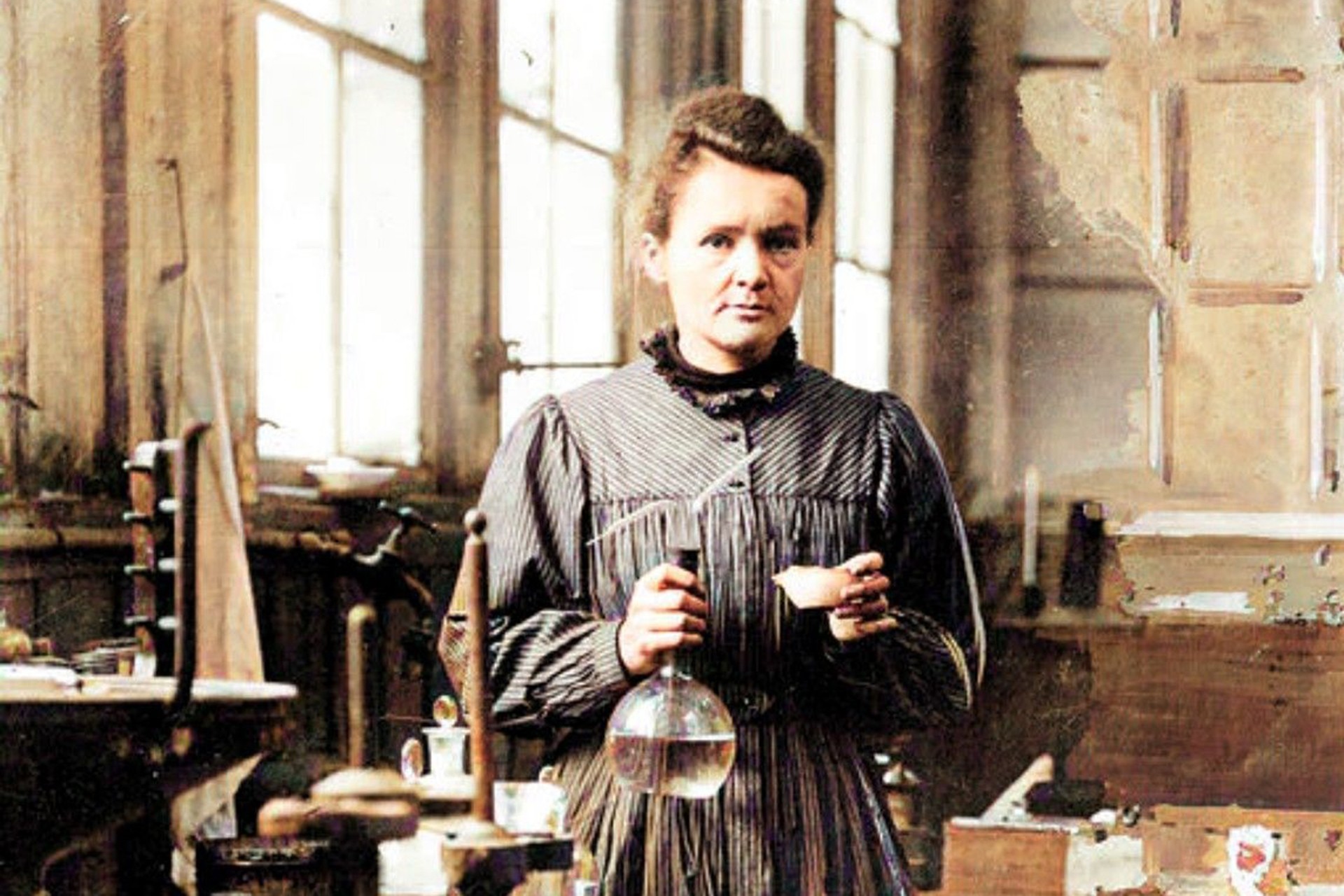The first woman scholar to break the male-dominated structure in the world of science: Madame Curie
Moreover, while doing this, she crushed her male rivals in his own lane with her scientific reputation. Defying life, ruling out all the difficulties she faced, she took her rightful place in the magic world of science. Who was this woman? Marie Sklodowska or as she is known as Madame Curie!

She opened her eyes to life in Warsaw, Poland, in 1867. The fact that both her mother and father were teachers would give her an advantage over her peers. Her father was a teacher who had graduated from St. Petersburg University and later started teaching physics and mathematics in Warsaw: Vladislav Sklodowska. Her mother, Madame Sklodowska, was also an educator. Thanks to her parents, she soon learned how to read. She met science at a young age. In particular, the science cabinet in their home was Curie's number one source of entertainment. She drew attention in her class with her strong memory.
In physics lessons, what their teachers said about the order in the universe and the experiments they did in the laboratories,
it increased the enthusiasm of the young scientist, spurring her to know and learn more. Marie quickly saw the reward for her hard work. She soon became a well-known student with her success. At the age of 26, she met Pierre Curie, who had a passion for science like herself. Pierre was from Paris and had a good scientific career when he met Marie. When the couple married in 1895, Marie became known as Madame Curie and the couple devoted all their time to science.
Meanwhile, Röntgen had laid the foundations of X-ray technology with the legendary X-rays in November 1895. Henri Becquerel was investigating the relationship between X-Rays and fluorescence; but there was still a missing link in the chain of radioactivity. Finding it would be fate for Madame Curie.
Marie Salomea Skłodowska–Curie (7 November 1867 – 4 July 1934) was a Polish and naturalized-French physicist and chemist who conducted pioneering research on radioactivity. She was the first woman to win a Nobel Prize, the first person and the only woman to win the Nobel Prize twice, and the only person to win the Nobel Prize in two scientific fields. Her husband, Pierre Curie, was a co-winner on her first Nobel Prize, making them the first ever married couple to win the Nobel Prize and launching the Curie family legacy of five Nobel Prizes. She was, in 1906, the first woman to become a professor at the University of Paris.
She began detailed research on the beam (later emitted by uranium salts and later called radioactivity), first mentioned by Becquerel in 1897. A year later, when she realized that thorium also emits these rays, she and her husband Pierre started working on this subject. Meanwhile, Becquerel also discovered that two different uranium minerals were more active; with some work, he had obtained the elements polonium and radium. In July 1898, the Curies announced that they had found polonium, which is produced from the radioactive decay of uranium. By the way, they named the substance after Marie's homeland, Poland. They did not stop and in September 1898 they announced their discovery of the natural radioactive element radium. Upon these developments, Marie received her doctorate in 1903 and became the first woman to receive a doctorate in advanced science in France. In the same year, her husband, Becquerel and Marie, all three received the Nobel Prize in Physics. Marie became the first woman in history to receive a Nobel Prize.
In 1904, her husband Pierre began teaching at the Sorbonne, while she was also teaching physics at a girls' school in Sevres. Everything seemed fine, but there was something they didn't know; the deadly side effects of radioactivity, the field they deal with. The couple began to suffer from radiation sickness. The harmful effects of radium were slowly starting to show themselves. Widowed with her two children after Pierre Curie's death as a result of an accident, Marie took over her husband's teaching position at the Sorbonne and stubbornly clings to life despite all the adversities she was in. In 1908, she broke new ground as the first female professor at the Sorbonne. Although radioactivity was slowly taking over her body, Madame Curie would make another giant leap in her career, earning the Nobel Prize in Chemistry in 1911 for her role in the discovery of radium and polonium. Thus, Madame Curie became the first person in history to receive two Nobel prizes. Behind this lay the demonstration that an element can be transformed into another element after radioactive processes. This meant opening a whole new page in the field of chemistry. In 1914, she was appointed head of the Radium Institute at the University of Paris. Due to the importance of radium in medicine, she focused on teaching X-Ray technology during the First World War; taught physical therapists how to use radiology equipment in a combat environment. Of course, she was also exposed to high doses of radioactive rays.
Curie's body could not withstand the overdose of radiation she was exposed to, and this successful representative of women in the scientific arena died in Savoy, France in 1934 at the age of 67. This science worker, who was found to have died of blood cancer, left a huge scientific career woven with suffering and deserved to be remembered as "the only being among all the famous people, who was not spoiled by glory".
When it was revealed that the rays emitted by radium cured some tumors, the treatment period known as curietherapy (chemotherapy), inspired by her surname, was opened in the treatment of cancer.
